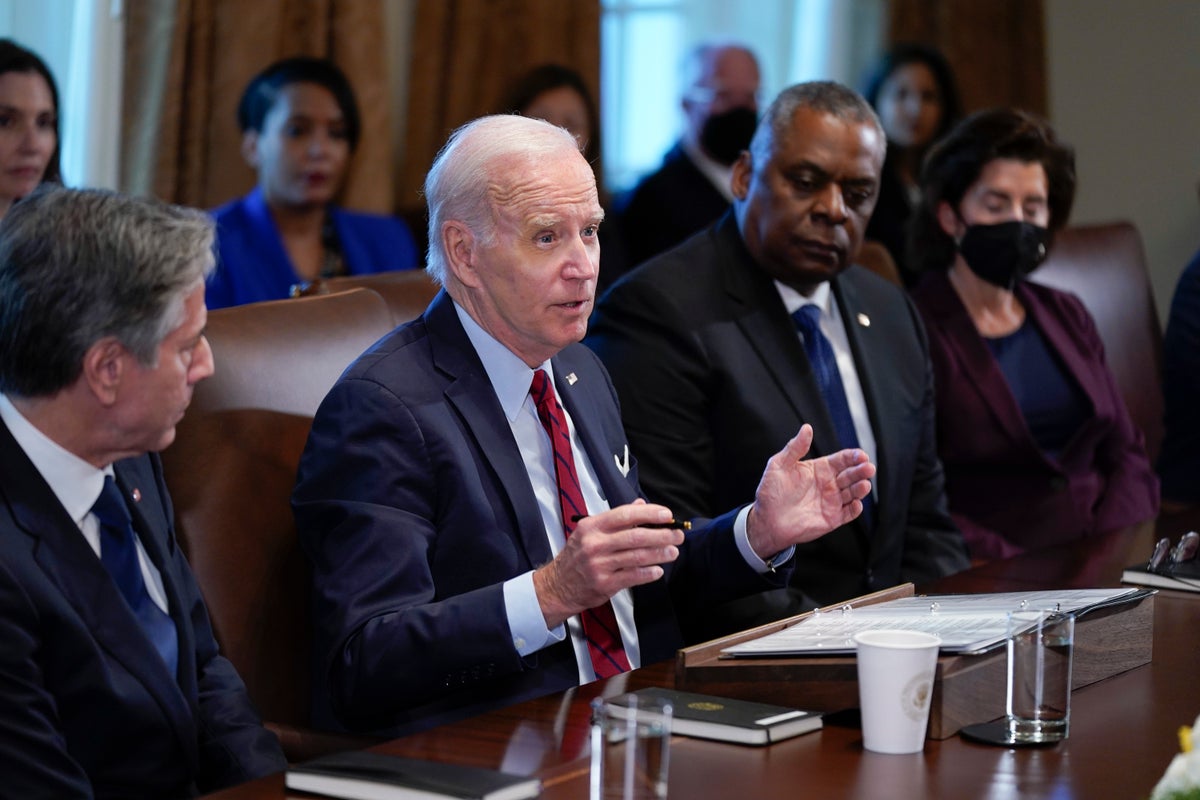
Top national security officials from the United States and Japan are expected to agree to changes in the joint defense posture this week as the two nations confront rising threats from North Korea and increasing aggressiveness from China.
U.S. officials say Secretary of State Antony Blinken and Defense Secretary Lloyd Austin will meet on Wednesday with their Japanese counterparts and plan to issue a joint statement that will adjust, but not increase, the American troop presence on the island of Okinawa. It also will add a formal mention of space in the longstanding mutual defense treaty the two countries have held, in a nod to the Pentagon's creation of the Space Force and Space Command.
The new agreements to be sealed at the so-called “two-plus-two” meeting will come just ahead of a visit to Washington by Japanese Prime Minister Fumio Kishida, who will meet with President Joe Biden at the White House on Friday.
“The leaders will discuss our shared vision of a modernized alliance that will tackle 21st century challenges in the Indo-Pacific and around the world," said Brig. Gen. Pat Ryder, the Pentagon press secretary, on Tuesday. "China certainly will be a topic of discussion with our Japanese allies during the consultative meetings this week.”
Ryder declined to provide details on the new agreement.
But, U.S. officials said the 12th Marine Regiment currently on Okinawa will transform into a smaller, more rapidly mobile unit — the 12th Marine Littoral Regiment. The new regiment is designed to be better able and equipped to fight an adversary and defend the U.S. and its allies in the region. U.S. officials said the decision will not increase the number of Marines on the island.
Instead, the change is part of a broader shift being made across the Marine Corps, as the commandant, Gen. David Berger, aims to make the service better able to operate and fight in contested areas, particularly within striking range of an enemy. That element is critical in the Indo-Pacific, where thousands of U.S. and allied forces are easily within missile — or even rocket — range of both China and North Korea.
One Marine littoral regiment has already been set up in Hawaii, the second would be in Okinawa and another is planned later this decade, with a possible location being Guam, according to officials. The officials spoke on condition of anonymity to discuss plans not publicly announced.
Details are still being worked out, but a littoral regiment is made up of roughly 2,000 Marines, and includes a combat team with an anti-ship missile battery, a logistics battalion and an air defense battalion. The current Marine regiment on Okinawa that it would essentially replace includes about 3,400 Marines and sailors. The overall number of Marines on Okinawa would remain about the same, officials said.
Asked about specific announcements, Ryder would only say that the meeting will provide an opportunity for talks on how to modernize the alliance and maintain a stable and secure Indo-Pacific.
Speaking to Pentagon reporters, Ryder also noted U.S. concerns over Chinese military activity in the region, including a recent incident when a Chinese fighter jet flew dangerously close to a U.S. Air Force plane over the South China Sea.
“In terms of Chinese behavior, as evidenced most recently by the PRC air intercept, it is concerning when you see these types of provocative actions taking place in sensitive areas,” said Ryder. “And so, again, our focus from the United States standpoint is working with our allies and our partners in the region like Japan, to ensure a free and open Indo Pacific and to ensure that security and stability continue to be present throughout the region.”







